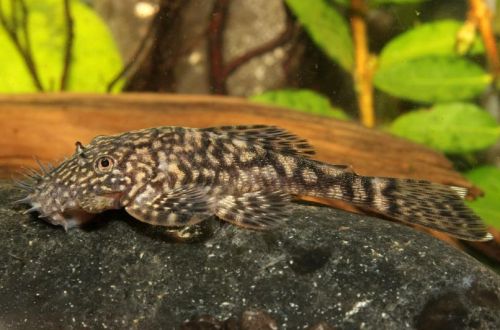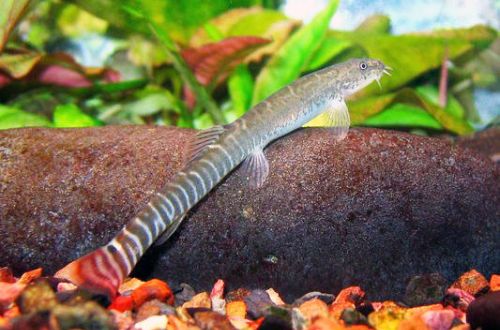
Ancistrus Claro
Ancistrus Claro, scientific name Ancistrus claro, belongs to the family Loricariidae (Mail catfish). The fish got its name from the area where it was first discovered – the small river Claro (Claro) is one of the tributaries of the Cuiabá (Cuaibá) in the state of Mato Grosso, central Brazil. An unpretentious and easy-to-keep catfish that gets along well with many other types of fish. All this makes it a good choice for the beginner aquarist.

Contents
Habitat
It comes from South America from the Cuiabá River basin, located mainly in the Brazilian state of Mato Grosso. Catfish is found mainly in the upper reaches, in rivers and streams with moderate and fast water flows, with substrates of boulders and snags.
Brief information:
- The volume of the aquarium – from 50 liters.
- Temperature – 23-28°C
- Value pH — 6.0–7.5
- Water hardness – 2–15 dGH
- Substrate type – sandy or rocky
- Lighting – subdued
- Brackish water – no
- Water movement – moderate or strong
- The size of the fish is up to 7 cm.
- Food – any sinking food
- Temperament – peaceful
- Keeping alone in company with other species
Description
Adult individuals reach a length of up to 7 cm. The fish has a flattened body, covered with hard plates, like chain mail (hence the name of the Chain Catfish family). The surface is rough, dotted with many small spines. The first rays of the fins are considerably thickened and turned into sharp spikes. On the head are several dozen fleshy tentacles designed to search for food. The color is gray with a brown pattern. Sexual dimorphism is weakly expressed. Males and females have no obvious visible differences.
Food
Omnivorous species. The diet may consist of dry food (flakes, granules), frozen foods (brine shrimp, daphnia, bloodworms, etc.), as well as herbal supplements in the form of spirulina flakes or pieces of vegetables and fruits. All food should be sinking, catfish will not swim to the surface to feed.
Maintenance and care, arrangement of the aquarium
The optimal size of the aquarium for one catfish starts from 50 liters. In the design, it is recommended to simulate the bed of a mountain river with substrates of sand and stones of variable size, small pebbles and boulders. Additional decorative elements will be snags from the roots and branches of trees, ceramic hollow tubes or pots turned over on their sides, various decorative items. All this is intended to form nooks and crannies where the fish could hide. The presence of aquatic plants is not required.
The maintenance of Ancistrus Claro will not cause great difficulties even for a novice aquarist. To avoid problems, it is necessary to regularly clean the aquarium, replace part of the water (30–40% of the volume) with fresh water weekly and remove organic waste (excrement, food residues) in a timely manner. Along with other equipment, the installation of a productive filtration system is essential. It solves two problems at once: it purifies water and creates an internal flow.
Behavior and Compatibility
Peaceful calm fish. Unlike most catfish are quite active. They belong to territorial species, but if the aquarium is large enough, for example, more than 100 liters and there are many shelters, then they will get along well with other non-aggressive fish. Nevertheless, it is desirable to select species that live in the water column or near the surface.
Breeding / breeding
Breeding is simple. With the onset of the mating season, the male and female find each other to form a temporary pair. They spawn in one of the shelters, after which the female swims away, and the male remains to protect the clutch. At this time, he can become a not too friendly neighbor, driving away anyone he considers potentially dangerous.
Since it is very difficult to determine gender, especially for amateurs, breeding is possible only by acquiring a group of 4–5 or more catfish, so that individuals of different sexes are likely to be caught.
Fish diseases
The cause of most diseases is unsuitable conditions of detention. A stable habitat will be the key to successful keeping. In the event of symptoms of the disease, first of all, the quality of the water should be checked and, if deviations are found, measures should be taken to correct the situation. If symptoms persist or even worsen, medical treatment will be required. Read more about symptoms and treatments in the Aquarium Fish Diseases section.





